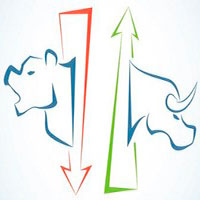In the world of finance and investing, where uncertainty and risk often reign, savvy traders seek innovative strategies to mitigate potential losses and maximize returns. Among these techniques, "Cross Hedging" emerges as a powerful tool, allowing investors to navigate volatile markets with precision and foresight. In this comprehensive article, we delve deep into the concept of Cross Hedging, exploring its definition, mechanics, and practical applications. Whether you're an aspiring trader seeking to enhance your financial acumen or a seasoned investor searching for additional risk management tactics, join us on a journey to unravel the art of Cross Hedging and unlock new possibilities in the dynamic landscape of trading.
The Cross Hedging Meaning Explained
At its core, Cross Hedging involves the use of financial instruments to protect against risks in an asset that may not have a perfect hedge readily available. Unlike traditional hedging, where an exact match between the hedging instrument and the asset being protected is sought, Cross Hedging involves utilizing related assets to create a strategic hedge, even if they are not identical in nature.
The key to successful Cross Hedging lies in identifying assets that exhibit a strong correlation with the asset being protected. This correlation might not be perfect, but it should be significant enough to provide some level of protection. By leveraging this relationship, traders can mitigate potential losses stemming from adverse market movements.
A practical example of Cross Hedging can be illustrated with a scenario involving a wheat producer. Suppose the producer is seeking protection against a potential drop in the price of wheat. While they could directly hedge their position using wheat futures, they might find that corn futures possess a relatively high correlation with wheat prices. In this case, the producer could initiate a Cross Hedge by taking a position in corn futures to offset potential losses in the wheat market.
The Difference Between Cross Hedging And Hedging
Hedging and Cross Hedging are both risk management techniques used in trading and investment to protect against potential losses, but they differ in their approach and purpose. Let's explore the key differences between these two strategies:
Definition And Purpose
- Hedging: Hedging involves the use of financial instruments to offset or reduce the risk associated with holding an existing investment position. The primary objective of hedging is to protect against adverse price movements in a specific asset. In this context, a trader seeks to create a direct and precise hedge by taking an opposite position to their original investment. The hedging instrument and the asset being protected should ideally have a perfect correlation to achieve an exact offset of risks.
- Cross Hedging: Cross Hedging, on the other hand, involves using related financial instruments to protect against risks in an asset that may not have a direct and perfect hedge readily available. It relies on assets that exhibit a significant correlation with the asset being protected, even though they might not be identical. The primary purpose of Cross Hedging is to manage risks when a perfect hedge for the specific asset is not possible.
Asset Correlation:
- Hedging: In traditional hedging, the asset being protected and the hedging instrument should have a strong positive correlation or a negative correlation, depending on the type of hedge used. For example, if a trader is holding a portfolio of stocks, they might hedge it by taking a short position in a stock index futures contract since stock prices and index prices tend to move in tandem.
- Cross Hedging: Cross Hedging, as mentioned earlier, relies on assets that have a significant correlation with the asset being protected. The correlation might not be perfect, but it should be strong enough to provide some level of protection. For instance, using corn futures to hedge against wheat price movements, as they are related agricultural commodities with a historically observable correlation.
The precision of Hedge:
- Hedging: Traditional hedging aims to create an exact hedge, meaning the hedging instrument perfectly offsets the risk of the underlying asset. If executed correctly, the gains or losses from the hedge should precisely cancel out the gains or losses from the original investment.
- Cross Hedging: Cross Hedging involves a less precise approach, as the asset being used for hedging is related but not identical to the asset being protected. The correlation between the two assets may change over time, leading to potential deviations in the hedge's effectiveness.
Complexity And Flexibility:
- Hedging: Traditional hedging strategies can be more straightforward and easier to implement since traders are dealing with identical or highly correlated assets. The focus is on finding a direct hedge that closely matches the original investment.
- Cross Hedging: Cross Hedging can be more complex as it requires identifying suitable assets with significant correlations and closely monitoring their relationship over time. It offers greater flexibility in situations where direct hedging instruments may not be available, allowing traders to adapt to market conditions more creatively.
In a nutshell, while both hedging and Cross Hedging aim to manage risk, hedging involves creating a direct and precise hedge with an identical or highly correlated asset, whereas Cross Hedging relies on related assets with significant correlations when an exact hedge is not feasible. Traders must consider the strengths and limitations of each strategy and choose the one that aligns best with their risk management objectives and market conditions.
What Is The Cross Hedging Formula?
The Cross Hedging Formula is a mathematical representation used to calculate the hedge ratio or the number of contracts or units of the hedging instrument required to effectively protect a given position in the underlying asset. The formula aims to establish a relationship between the price movements of the asset being protected and the price movements of the chosen hedging instrument.
To derive the Cross Hedging Formula, we need to understand the concept of the hedge ratio. The hedge ratio is the number of units of the hedging instrument required to hedge a single unit of the underlying asset effectively. It is determined by the correlation between the two assets.
The general formula for the hedge ratio (HR) is as follows:
- HR = Covariance between the asset being protected and the hedging instrument / Variance of the hedging instrument
- Where: Covariance = The statistical measure of the relationship between the two assets, reflecting how they move together or in opposite directions. A positive covariance indicates they move together, while a negative covariance means they move inversely.
- Variance = The statistical measure of the dispersion of returns of the hedging instrument. It quantifies the instrument's volatility and risk.
Once the hedge ratio is calculated, the number of units of the hedging instrument required for the Cross Hedge is determined by multiplying the hedge ratio by the quantity of the underlying asset being protected.
Example: Let's consider a scenario where a soybean producer wishes to Cross Hedge against potential price fluctuations in soybean prices. They decide to use corn futures as the hedging instrument because soybean and corn prices have shown a historically significant positive correlation.
Calculate the hedge ratio: Suppose the covariance between soybean and corn futures prices is 0.80, and the variance of corn futures prices is 0.64. HR = 0.80 / 0.64 HR ≈ 1.25. Assume the producer wants to protect 10,000 bushels of soybeans. Number of corn futures contracts needed = HR * Quantity of soybeans Number of corn futures contracts = 1.25 * 10,000 Number of corn futures contracts = 12,500. In this example, the producer would need to buy 12,500 corn futures contracts to effectively hedge against potential losses in soybean prices.
It is essential to note that the effectiveness of the Cross Hedge depends on the strength of the correlation between the underlying asset and the hedging instrument. Traders should continuously monitor the correlation and adjust their positions as market conditions change to maintain an optimal hedge.
When To Use Cross Hedging
Cross Hedging can be a valuable risk management strategy under specific market conditions and circumstances. Traders and investors may consider using Cross Hedging in the following situations:
- Lack of Direct Hedging Instruments. Cross Hedging becomes necessary when a direct and perfect hedging instrument for the underlying asset is not available in the market. In such cases, finding a related asset with a significant correlation to the asset being protected allows for an alternative risk management approach.
- Highly Correlated Assets. When the underlying asset and another asset have a strong historical correlation, Cross Hedging can be an effective way to protect against price fluctuations. The degree of correlation between the assets will influence the precision and effectiveness of the Cross Hedge.
- Diversified Portfolio. Cross Hedging is particularly useful for diversified portfolios that include assets with limited hedging options. By using related instruments, traders can enhance the overall risk management of their portfolios.
- Commodity Markets. Cross Hedging is commonly employed in commodity markets where various assets within the same sector often exhibit significant correlations. For example, using crude oil futures to hedge against price fluctuations in gasoline, given their close relationship.
- Cross-Border Investments. Investors with exposure to foreign markets might use Cross Hedging to manage exchange rate risks. By hedging their positions using related assets denominated in their home currency, they can protect against adverse currency movements.
- Temporary Hedging Needs. Cross Hedging can be useful for short-term hedging needs when a direct hedge might not be practical due to contract expirations or liquidity constraints. It provides a flexible approach to managing risk during transitional periods.
- Flexibility and Creativity. Cross Hedging allows traders to use their creativity and adaptability in constructing risk management strategies. It offers more options to mitigate risk when conventional hedging methods may not suffice.
- Short-Term Hedging Needs. Cross Hedging is particularly useful for short-term hedging needs, especially when direct hedges may not be practical due to contract expirations or liquidity constraints. It provides a nimble approach to managing risk during transitional periods.
- Risk Mitigation in Diversified Portfolios. For portfolios that include assets with limited hedging options, Cross Hedging becomes a valuable tool to manage risk across different asset classes. It complements traditional hedging strategies and enhances risk management capabilities.
- Cost-Efficiency. In some cases, Cross Hedging can be more cost-effective than direct hedging methods, as related assets might have lower transaction costs or margin requirements.
- Pitfalls Of Cross Hedging. However, it's essential to be aware of the challenges and limitations associated with Cross Hedging:
- Imperfect Correlation. The effectiveness of the Cross Hedge relies on the correlation between the underlying asset and the hedging instrument. The correlation may change over time or break down, affecting the hedge's efficiency.
- Market Liquidity. The availability and liquidity of the chosen hedging instrument should be considered. Illiquid assets may result in difficulties executing trades at desired prices.
- Basis Risk. Basis risk refers to the risk that the relationship between the underlying asset and the hedging instrument deviates from historical correlations. Basis risk could impact the hedge's performance.
- Complexity. Cross Hedging can be more complex compared to direct hedging methods. Traders need to carefully assess correlations and make informed decisions to ensure the effectiveness of the hedge.
Conclusion
Cross Hedging can be a powerful tool for managing risk when direct and perfect hedging instruments are unavailable or inadequate. It provides flexibility and adaptability in constructing risk management strategies, especially in situations where traditional hedging methods fall short. Nonetheless, traders should carefully assess correlations, monitor market conditions, and understand the risks involved before implementing Cross Hedging strategies.

















